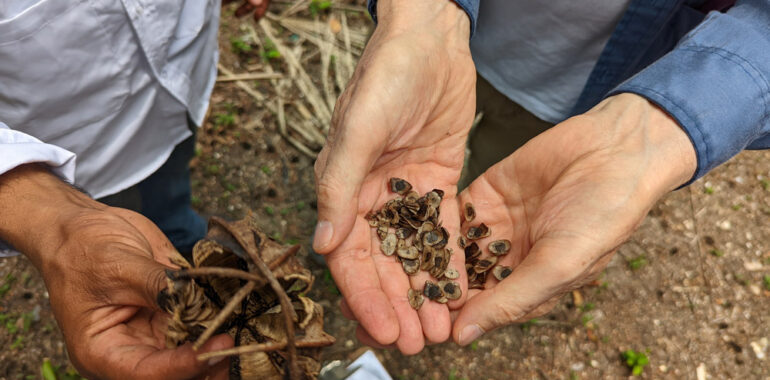Park rangers are specialists in nature. Their knowledge and experience are unparalleled from any other people due to the time they stay in wild places. To acknowledge their labor and honor World Ranger Day, next follow some of the lessons and adventures they have shared with FLAAR Mesoamérica’s expeditions team.
Most park rangers in Guatemala grow up in areas surrounded by nature where they get to interact with nature when they are young. Perhaps, this is why many of them share an appreciation for nature as well as for conservation efforts. Moreover, by having this background, many of them have gathered insightful knowledge of natural phenomena that you may not find anywhere or with anybody else.
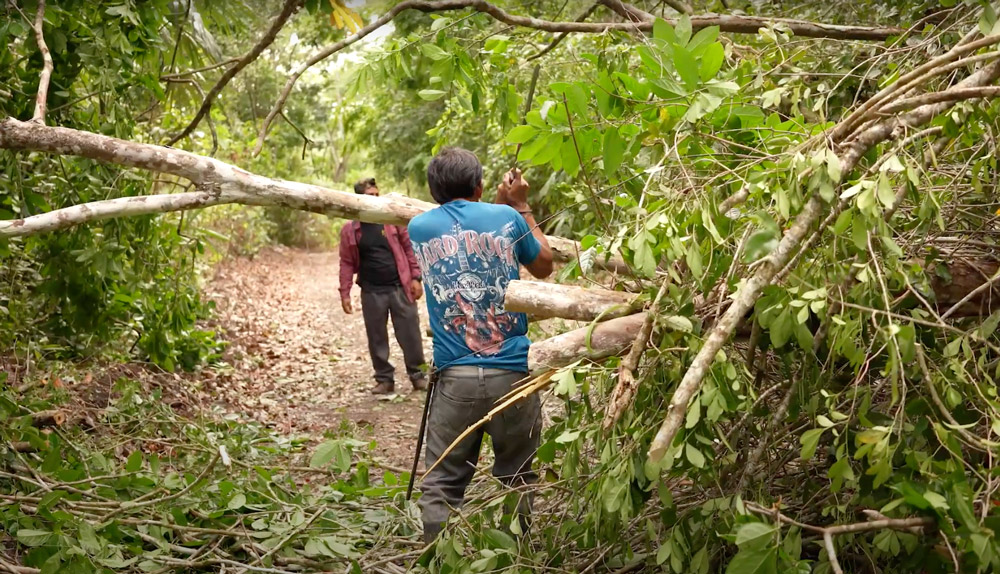
Park rangers are able to make their way through the wilderness. Here, they were guiding the FLAAR Mesoamérica team to the only millenary remnant of pine forest in the Maya Biosphere Reserve (RBM). Northern border of Tikal National Park (PANAT); May 2023. Photo by Edwin Solares.
They also know many things about wild species; from the medicinal properties of local plants, to where to show you natural processes that otherwise, you may be clueless about. Furthermore, they understand how to interact with nature. For example, they are aware of which plants, fungi, insects or animals to avoid in the wild or when is the best time to enter and exit specific locations.
On another topic, park rangers are extremely helpful to address natural areas because of their developed sense of direction. They usually know how to move around the wilderness and how to get to most areas within a nature preserve. In that sense, the support of tens of different park rangers has been crucial for the FLAAR expedition team throughout Guatemala’s territories. The support of different individuals to guide FLAAR’s staff to the locations or species within the organization’s research objectives has been vital to the development of FLAAR’s notorious work. Not to mention their hard work on cleaning trails that go through the forest, and on helping the staff to carry equipment.
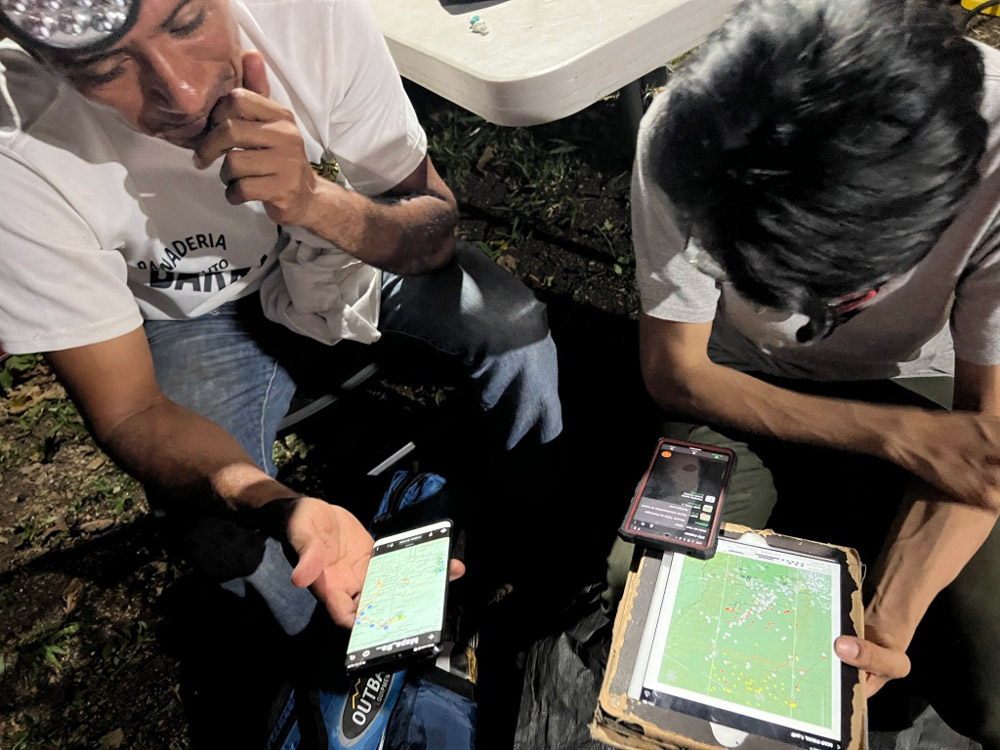
Moisés Daniel Pérez (Teco) is sharing his own annotations and coordinates with FLAAR Mesoamérica while coordinating an exploration trip in the Forest Management Unit La Gloria. San José, Petén; May 5, 2022. Photo by Isabel Paiz.
Another important aspect of their work is to patrol protected areas. However, most park rangers in Guatemala don’t have the capabilities at this moment to stop illicit activities happening inside nature preserves. To start with, there are usually not enough park rangers to monitor the totality of the protected areas. In fact, the local government has cut the budget for the Ministry of Environment and Natural Resources (MARN) in the last few years, which limits even more their number and the capabilities of local public institutions. Moreover, most park rangers in Guatemala are not properly equipped or trained.
Nonetheless, there are other activities that park rangers continue to be helpful with. For instance, their support is vital to implement research and conservation projects. In that sense, they are usually very adept at developing monitoring and reforestation activities, and both their enthusiasm and quick learning while doing such tasks is admirable.
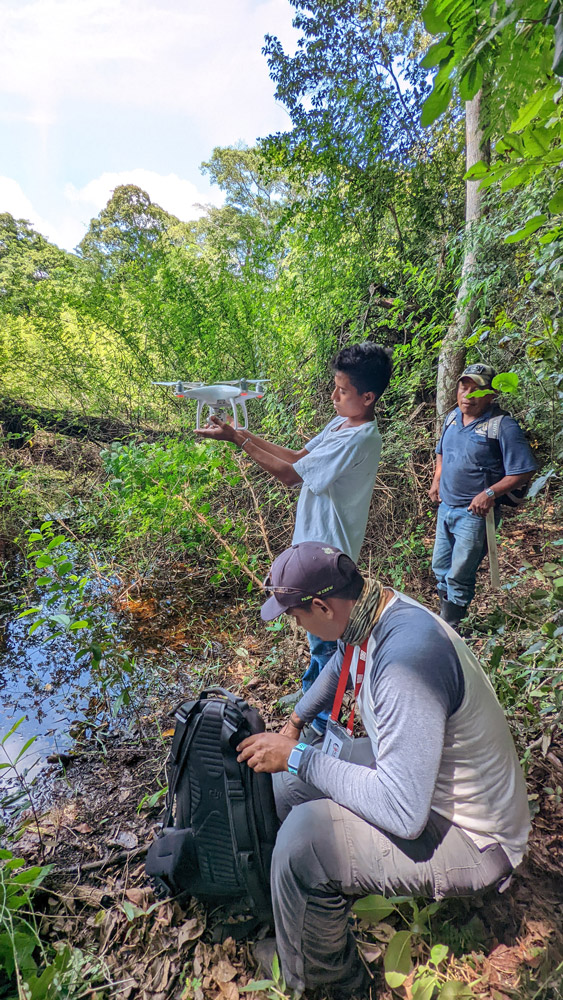
Park rangers helping FLAAR’s staff to launch a drone in Aguada La Pailona. Forest Management Unit La Gloria, San José, Petén; May 6, 2022. Photo by Vivian Hurtado.
To honor World Ranger Day you may want to look at some of the knowledge and experiences that local rangers have shared with the FLAAR team.
To start with, our team has learned a lot about the properties of different plants of the Maya biosphere Reserve (RBM) through park rangers. On a trip to the forest management unit of La Gloria, our team learned about three different plants that we had no previous knowledge about. One of these plants is locally known as chupa miel and both rangers and local people use its sap when someone is bitten by a venomous snake. One of the other species is known as manax and corresponds to a Pseudolmedia species, of which the rangers told the team that its fruits are tasty. Lastly, our team learned about a species from the Zanthoxylum genus locally known as naranjillo. Its leaves have a citric aroma when crushed and they are used for medicine by local people.
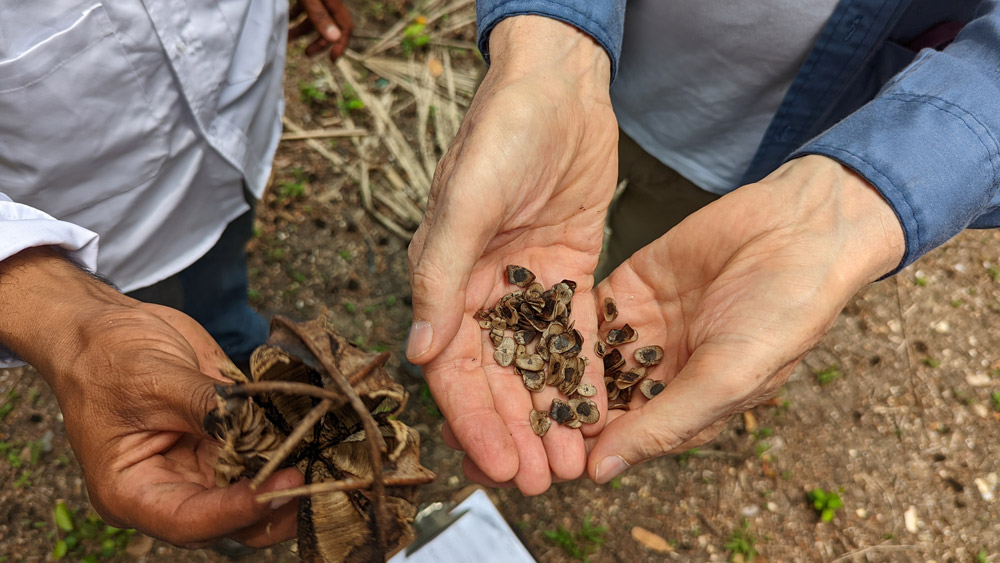
Moisés Daniel Pérez (Teco) holding what he considers to be the chupamiel seeds in Camp La Pailona. Forest Management Unit La Gloria, San José, Petén; May 6, 2022. Photo by Vivian Hurtado.
It is both valuable and impressive that park rangers can tell you about wild edible plants and fruits even when these plants or fruits are out of season. This happened with the few manax trees that they found which had not a single fruit on them.
Our team has also been led by park rangers to find specific species that we’ve been looking for in the wild. For instance, our team got to document the red mangroves (Rhizophora mangle) of Río San Pedro thanks to a local guide that knew where the trees were. In May 2022, another park ranger with whom we’ve worked for many years located wild vanilla flowers in bloom while exploring the Yaxhá, Nakum and Naranjo National Park in Petén (in the north of Guatemala).
Vanilla flowers are extremely hard to see in the wild. In fact, this ranger had been monitoring several vanilla plants throughout the Maya Biosphere Reserve to document their flowers, and had no success for more than 2 years. Yet, he found the flowers of a Vanilla insignis plant while driving in a motorbike just a few meters ahead of our team’s pickup and made it possible for our team to photograph them.
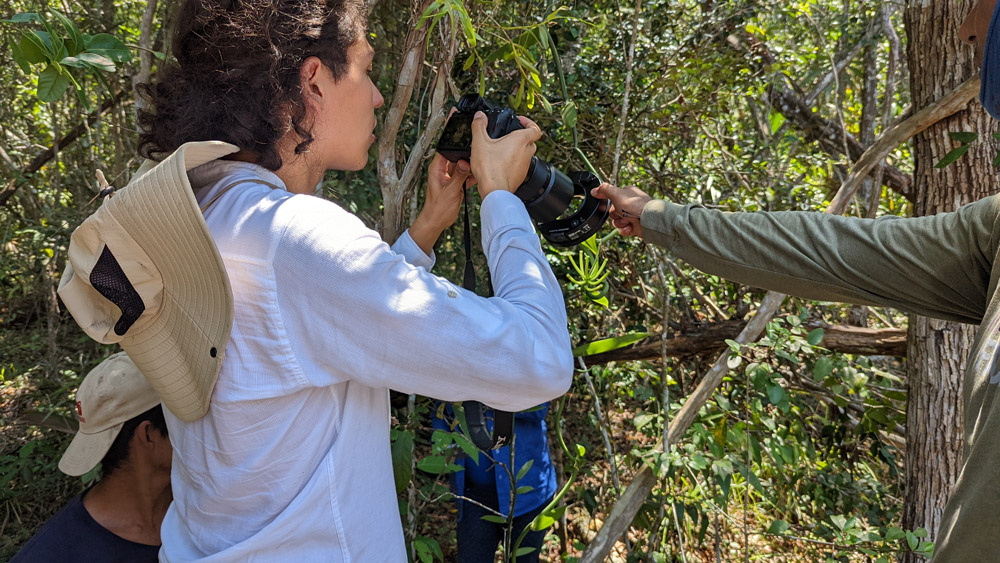
The FLAAR Mesoamérica team was assisted by park rangers of Forest Management Unit La Gloria to photograph this wild Vanilla insignis flower that Moisés D. Pérez (Teco) had found a day before. San José, Petén; Mayo 7, 2022. Photo by Vivian Hurtado.
Park rangers and local guides have also been extremely helpful to find ecosystems within FLAAR’s research objectives. They have led our team to find tasistales (ecosystems dominated by tasiste palms, Acoelorraphe wrightii), natural savannas, pitales (ecosystems where the dominant species is either Bromelia karatas or Bromelia pinguin), and corozeras (dominated by Attalea palms), among many others.

The park ranger of the natural private preserve Finca Tulán showed some of the animal species that he captured with a camera trap to the FLAAR Mesoamérica team. Finca Tulán, Petén; August 8, 2021. Photo by Roxana Leal.
Last but not least, they have candidly shown our team many wild animal species in their habitat. For instance, a ranger from the CONAP camp at Paso Caballos showed the members of our team the endangered and prehistoric pejelagarto fish (Atractosteus tropicus) in a river just a few meters from the camp. Crocodiles, herons and stingless bees are also among the repertoire of animals they have shown to the FLAAR team.
There is no doubt that interacting with park rangers can be a rewarding experience full of learning. However, their work goes well beyond. For instance, this happens when they assist researchers in the field, or when they accomplish research objectives through their knowledge. Either way, this has been true with the park rangers that FLAAR has collaborated with and for that reason, FLAAR Mesoamérica acknowledges their valuable labor while commemorating World Ranger Day today, July 31.
Written by Sergio D’angelo Jerez

